
Nobody I know could fail to be dazzled by the discovery of a new barbet in Peru–or by the painting of the bird, the Sira Barbet Capito fitzpatricki, on the cover of this month’s number of The Auk. At the same time, though, I bet nearly everybody e-leafs right past Seeholzer et al.’s description to get to the birderly meat of the new issue: the 2012 Supplement to the AOU Check-list.
My own thoughts of late are aswarm even more than usual with sparrows, so naturally I went to the emberizids first.
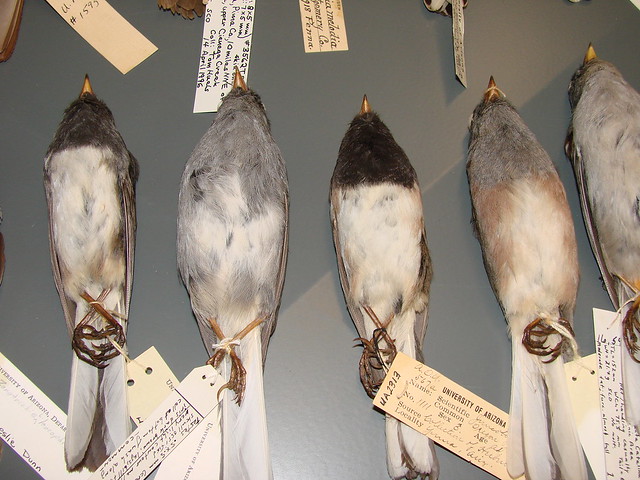
The proposal to split the beautiful pastel Baird’s Junco from the other Yellow-eyed Juncos, was not accepted; neither was the split, first formally proposed three or four years ago, of the Savannah Sparrow into two or three or four species.
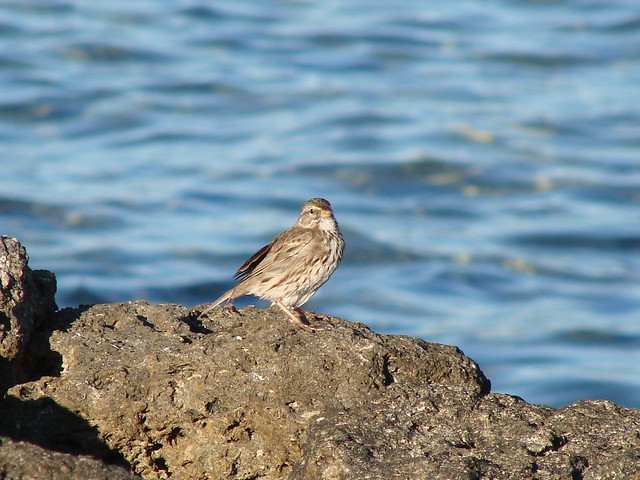
The linear sequence of the Spizella sparrows, subject of an oddly half-hearted proposal this time around, also remains unchanged (that proposal summarizes research that purports to show, interestingly, that the closest relative of Worthen’s Sparrow is not the look-alike Field Sparrow but rather Brewer’s Sparrow).

But there are still some sparrow changes. The tropical “cardinals” of the genus Paroaria are kicked out of Emberizidae and moved to the tanager family Thraupidae, a taxon well on its way to becoming the next catch-all.
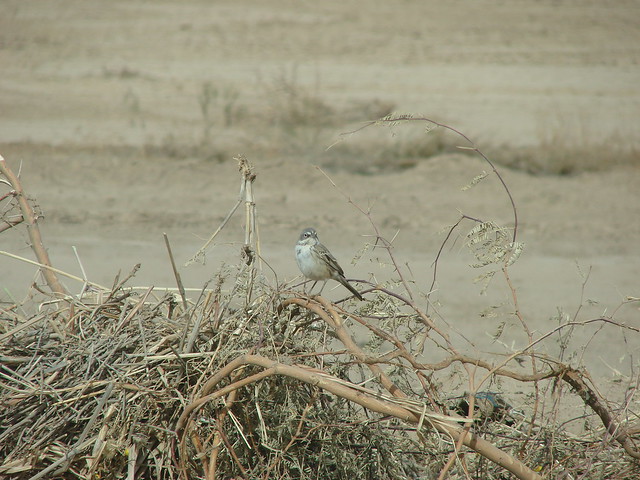
US birders will sit up and take note at the new and slightly ungainly genus name coined for the Sage Sparrow(s); it–or they—are henceforth members of the (provisionally) monotypic genus Artemisiospiza, while the Black-throated Sparrow now shares Amphispiza with only the Five-striped Sparrow. The only “splits” among the emberizids are the recognition of two new Arremon brush-finches, both formerly considered conspecific with South America’s Stripe-headed Brush-Finch; the North American committee agrees with the decision of its South American counterpart in recognizing as distinct the “new” Costa Rican and Black-headed Brush-Finches (and in retaining the hyphen).
The other species-level splits affect two seabirds and a raptor. Galapagos Shearwater, formally described 125 years ago by Robert Ridgway, is once again recognized as a species separate from Audubon’s Shearwater. A much-bruited change is the split of the old Xantus’s Murrelet into a northern and a southern species, Guadalupe Murrelet and Scripps’s Murrelet; these two have been well illustrated in the field guides for decades now, and birders fortunate enough to be out in places where they’re possible already routinely distinguish the two.
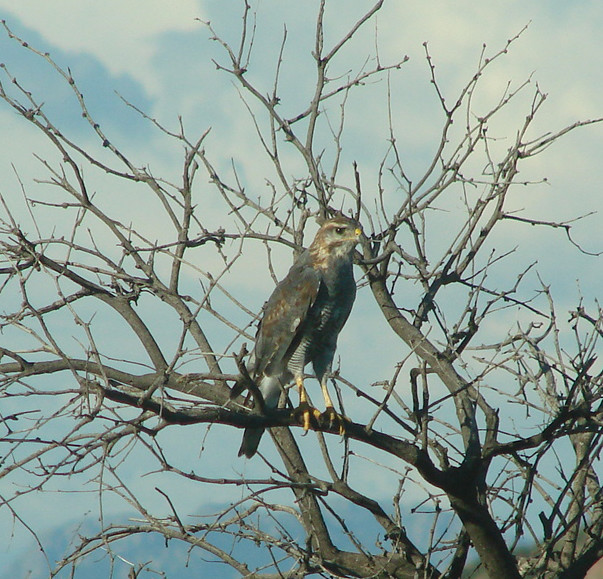
Equally anticipated is the recognition that the former Gray Hawk in fact represents two species, a reasonable view that has been taken at regular intervals over the past two centuries. Unfortunately, and in sad contrast to the sensible naming practice adopted for the “new” murrelets, the Committee muffed it in assigning English names to these two tropical raptors. Priority requires that the scientific name nitidus go with the southern species, the Gray-lined Hawk, but the AOU retained the English name Gray Hawk for the northern birds (now Buteo plagiatus). The historical record for Mexico and the southwest United States is full of mentions of Gray Hawk Buteo nitidus, a name combination that with the publication of this supplement no longer makes sense and is likely to be a source of perennial confusion. Notably, regrettably, the Committee rejected a proposal to assign the northern species the English name “Ashy Hawk,” which would have been a good step towards avoiding at least future confusion.
The Supplement makes another nine changes to English names. Most are simple and straightforward–easy enough to learn to say Indian Peafowl or Island Canary. Trudeau’s mysterious tern is now officially Snowy-crowned Tern, and Solander has lost his petrel, now named Providence Petrel. Like most history-minded birders, I was happy to see that this apparent hostility to the English patronym was not extended to the newly described Puffinus bryani, Bryan’s Shearwater.
Taking a broader view, name changes and splits are perhaps the least interesting of the Supplement’s determinations. If we really want to understand more about the relationships between avian taxa, we need to look at the higher levels of classification; there are some real eye-openers this time around. Birders from the Great Plains west will be especially interested this time of year in the move of the Calliope Hummingbird out of its prettily named genus Stellula and and into Selasphorus; as the proposal noted, this is no surprise to “anyone who knows Calliope Hummingbird.”

A change in the opposite direction takes place among the wrens: Carolina Wren is now all alone in Thryothorus, its former fellows there now spread among three resurrected genera that the linear sequence places closer to the cactus wrens than to Carolina.
Two other venerable and familiar genera have also been revised in ways that will take some getting used to. The nightjar genus Caprimulgus, a name reaching all the way back to the authoritative 1758 edition of Linnaeus, has been divvied up such that it is now entirely unrepresented in North America. “Our” old Caprimulgus species are now members of the genus Antrostomus, erected by Bonaparte in 1838 with reference to the Chuck-will’s widow and the Eastern Whip-poor-will. I’ll miss being able to initiate new birders into the meanings and the (partly contrived) mythology of the old name, but Bonaparte’s coinage isn’t half bad, either: if you’ve ever handled one, you know how like a gaping cavern the mouths of our goatsuckers are.

It’s a red-letter day for most of us when we actually see an Antrostomus nightjar, but the revision of the genus Carpodacus will affect most North American birders every time they look out the window. Cassin’s, Purple, and House Finches are apparently not closely enough related to the classic rosefinches to be considered congeneric with them any longer; Swainson’s 1837 Haemorhous has been revived to accommodate the North American breeders. I have to admit that I don’t know what the Swainsonian name means etymologically; the closest I can come is “blood-red like the sumac,” but corrections and conjectures welcome.
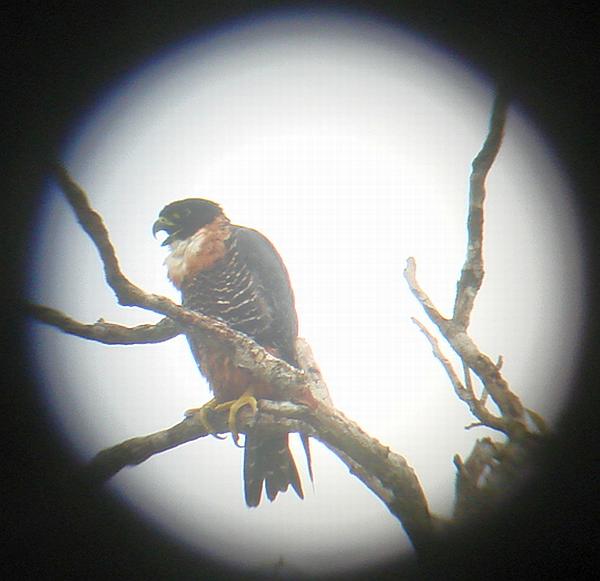
Perhaps the most revealing–and for birders perhaps the most jarring–of all the changes put forth in this Supplement is the move of the falconids and the parrots to a new position between the woodpeckers and the passeriform birds, a change made last year by the South American committee. No longer will the woodpeckers occupy the center of the field guides, and no longer will the falcons and caracaras follow immediately on the similar, but only rather distantly related, hawks and kites. The research cited in justification of this move suggests that the branch now believed to include the falcons, the parrots, and the songbirds may aso be shared by the seriemas, of all things. I’ll certainly be looking at all these birds differently now.
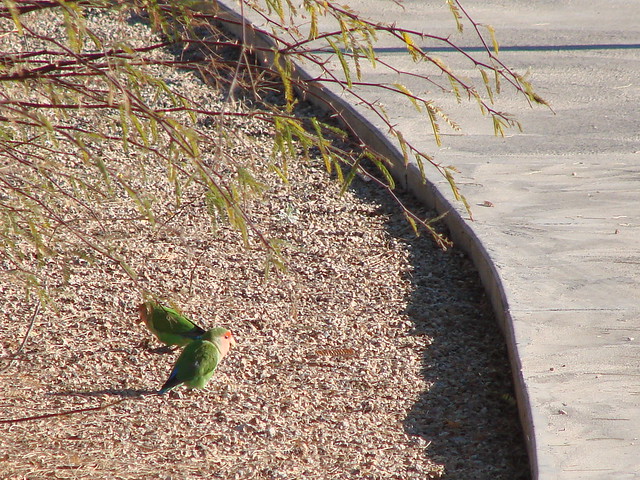
And that’s the fun of the annual Supplement, isn’t it? New names shift our thinking, new classifications jar our settled impressions. A very good thing.

